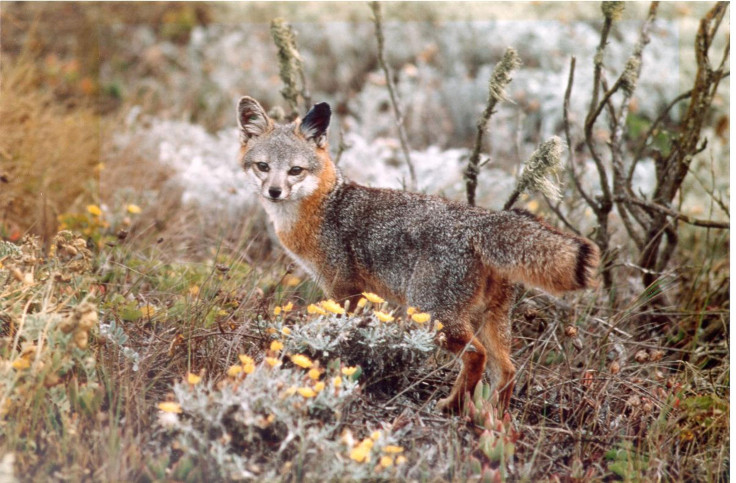Channel Island Foxes Removed From Endangered Species List In Record-Breaking Recovery

Channel Island foxes have made a spectacular comeback from being on the verge of extinction to the point where three subspecies of island fox was removed from the list of federally endangered species by the United States wildlife officials Thursday.
Of the six subspecies of island fox — each named for the specific Channel Island they inhabit — four were federally listed as endangered in 2004. The foxes residing in San Miguel, Santa Barbara, Santa Rosa were Thursday removed from the list, marking the fastest successful recovery for any Endangered Species Act-listed mammal in the United States, the U.S. Fish and Wildlife Service announced.
“The Island Fox recovery is an incredible success story about the power of partnerships and the ability of collaborative conservation to correct course for a species on the brink of extinction,” said U.S. Interior Secretary Sally Jewell, in a news release.
The island foxes are descendants of mainland gray foxes but evolved to the size of a house cat for survival in their habitat with slim resources. Eating lizards, birds, deer mice and plants, the foxes were the top predators in the region for long. This, however, changed when livestock was brought to the islands by 19th-century settlers. Golden eagles, who were attracted by the pigs, found that the “island dwarves” were also suitable to be eaten.
By 2000, San Miguel and Santa Rosa islands only had 15 foxes each while Santa Cruz had 55.
National Park Service, Nature Conservancy and Catalina Island Conservancy, together with the wildlife service put in place an aggressive plan where golden eagles were moved to Northern California, bald eagles reintroduced to the islands, and foxes were vaccinated and bred in captivity.
Scott Morrison of the Nature Conservancy, which co-owns Santa Cruz Island, said that in the past “you would not have seen a fox. Now, you go out there and you don’t have to wait very long before a fox crosses your path.”
Populations have jumped to levels ranging from an estimated 700 foxes on San Miguel Island to 2,100 foxes on Santa Cruz Island following the recovery that cost about $20 million just for the captive rearing and monitoring portions of the program.
The fourth subspecies of the fox that has not been removed from the list is the one found on Santa Catalina Island. Although the numbers are recovering, it is not as fast as the subspecies on the northern Channel Islands, causing federal officials to downgrade their status from endangered to threatened.
Under President Barack Obama’s administration, 19 animals and plants have been pulled off the endangered species list, a number higher than any of the previous administrations, according to wildlife service director Dan Ashe.
“The Endangered Species Act is an effective tool to protect imperiled wildlife so future generations benefit from the same abundance and diversity of animals and plants we enjoy today. What happened in record time at Channel Islands National Park can serve as a model for partnership-driven conservation efforts across the country,” Jewell said.
© Copyright IBTimes 2024. All rights reserved.






















